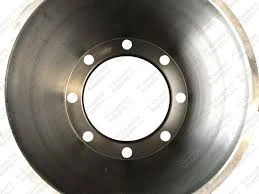
-
 Afrikaans
Afrikaans -
 Albanian
Albanian -
 Amharic
Amharic -
 Arabic
Arabic -
 Armenian
Armenian -
 Azerbaijani
Azerbaijani -
 Basque
Basque -
 Belarusian
Belarusian -
 Bengali
Bengali -
 Bosnian
Bosnian -
 Bulgarian
Bulgarian -
 Catalan
Catalan -
 Cebuano
Cebuano -
 Corsican
Corsican -
 Croatian
Croatian -
 Czech
Czech -
 Danish
Danish -
 Dutch
Dutch -
 English
English -
 Esperanto
Esperanto -
 Estonian
Estonian -
 Finnish
Finnish -
 French
French -
 Frisian
Frisian -
 Galician
Galician -
 Georgian
Georgian -
 German
German -
 Greek
Greek -
 Gujarati
Gujarati -
 Haitian Creole
Haitian Creole -
 hausa
hausa -
 hawaiian
hawaiian -
 Hebrew
Hebrew -
 Hindi
Hindi -
 Miao
Miao -
 Hungarian
Hungarian -
 Icelandic
Icelandic -
 igbo
igbo -
 Indonesian
Indonesian -
 irish
irish -
 Italian
Italian -
 Japanese
Japanese -
 Javanese
Javanese -
 Kannada
Kannada -
 kazakh
kazakh -
 Khmer
Khmer -
 Rwandese
Rwandese -
 Korean
Korean -
 Kurdish
Kurdish -
 Kyrgyz
Kyrgyz -
 Lao
Lao -
 Latin
Latin -
 Latvian
Latvian -
 Lithuanian
Lithuanian -
 Luxembourgish
Luxembourgish -
 Macedonian
Macedonian -
 Malgashi
Malgashi -
 Malay
Malay -
 Malayalam
Malayalam -
 Maltese
Maltese -
 Maori
Maori -
 Marathi
Marathi -
 Mongolian
Mongolian -
 Myanmar
Myanmar -
 Nepali
Nepali -
 Norwegian
Norwegian -
 Norwegian
Norwegian -
 Occitan
Occitan -
 Pashto
Pashto -
 Persian
Persian -
 Polish
Polish -
 Portuguese
Portuguese -
 Punjabi
Punjabi -
 Romanian
Romanian -
 Russian
Russian -
 Samoan
Samoan -
 Scottish Gaelic
Scottish Gaelic -
 Serbian
Serbian -
 Sesotho
Sesotho -
 Shona
Shona -
 Sindhi
Sindhi -
 Sinhala
Sinhala -
 Slovak
Slovak -
 Slovenian
Slovenian -
 Somali
Somali -
 Spanish
Spanish -
 Sundanese
Sundanese -
 Swahili
Swahili -
 Swedish
Swedish -
 Tagalog
Tagalog -
 Tajik
Tajik -
 Tamil
Tamil -
 Tatar
Tatar -
 Telugu
Telugu -
 Thai
Thai -
 Turkish
Turkish -
 Turkmen
Turkmen -
 Ukrainian
Ukrainian -
 Urdu
Urdu -
 Uighur
Uighur -
 Uzbek
Uzbek -
 Vietnamese
Vietnamese -
 Welsh
Welsh -
 Bantu
Bantu -
 Yiddish
Yiddish -
 Yoruba
Yoruba -
 Zulu
Zulu
drum vs disc brakes
Drum vs. Disc Brakes A Comprehensive Comparison
When it comes to automotive braking systems, two primary types dominate the conversation drum brakes and disc brakes. Each system offers unique advantages and disadvantages, making them suitable for different driving conditions and vehicle types. Understanding the fundamental differences between these two systems is essential for making informed decisions about vehicle performance and safety.
Drum Brakes A Classic Design
Drum brakes have been a staple in the automotive industry for decades. They consist of a cylindrical drum that rotates with the wheel and brake shoes that press against the inner surface of the drum to create friction. One of the key advantages of drum brakes is their ability to provide powerful braking force, especially in low-speed applications. This makes them particularly effective for use in rear axle positions of passenger vehicles, where the demand for stopping power is not as high as in the front.
Another benefit of drum brakes is their cost-effectiveness. The simpler design and fewer components lead to lower manufacturing and replacement costs. Additionally, the enclosed nature of drum brakes helps protect them from the elements, reducing wear from debris and moisture. This characteristic can enhance their longevity in certain environments.
However, drum brakes do have drawbacks. They are known for their tendency to overheat, especially during prolonged or aggressive braking, which can lead to reduced performance and even brake fade. Drum brakes also tend to be heavier than disc brakes, which can affect the overall weight and efficiency of the vehicle.
Disc Brakes Modern Engineering
drum vs disc brakes

Disc brakes have become increasingly popular, especially in modern vehicles and performance applications. They consist of a rotor, which is a flat disc that spins with the wheel, and calipers that house brake pads. When the brakes are applied, the calipers squeeze the pads against the rotor, generating friction to slow the vehicle.
One of the most significant advantages of disc brakes is their superior heat dissipation. The open design allows for better airflow, helping to maintain consistent braking performance under heavy use. This makes disc brakes an ideal choice for high-performance vehicles and for applications requiring frequent, rapid stops. Furthermore, disc brakes generally provide better wet-weather performance, as the exposed nature allows for quicker drying after rain or moisture exposure.
Another advantage of disc brakes is their lighter weight compared to drum brakes, which can improve overall vehicle handling and fuel efficiency. They also tend to require less maintenance, as they are less susceptible to the issues of wear that can plague drum brakes.
However, disc brakes are not without their disadvantages. They typically come with a higher price tag due to their more complex design and manufacturing processes. Additionally, they may wear out brake pads more quickly than drum brakes, which can contribute to ongoing maintenance costs.
Conclusion The Best Choice for Your Needs
Ultimately, the choice between drum and disc brakes depends on the specific needs and usage of the vehicle. For everyday driving and lower-speed applications, drum brakes can offer a cost-effective and reliable solution. However, for performance-oriented vehicles or those frequently tackling challenging driving conditions, disc brakes present clear advantages in terms of heat dissipation and overall stopping power.
In the end, both braking systems have their merits, and understanding these distinctions can help drivers make the best choice for their driving style and safety requirements. Whether you lean towards the reliability of drum brakes or the advanced performance of disc brakes, ensuring your vehicle’s braking system is up to the task is vital for safety on the road.
-
What Are Drum BrakesNewsJul.07,2025
-
Understanding Brake Drum MaterialNewsJul.07,2025
-
Semi-Trailer Brake Drum: A Key Component for Extreme Loads and Long-Distance TransportNewsJul.07,2025
-
Drum Brake Pads for SaleNewsJul.07,2025
-
Brake Drums for SaleNewsJul.07,2025
-
Brake Drum ManufacturerNewsJul.07,2025
-
Aluminum Brake Drums: The Future of High-Performance CarsNewsJul.07,2025
